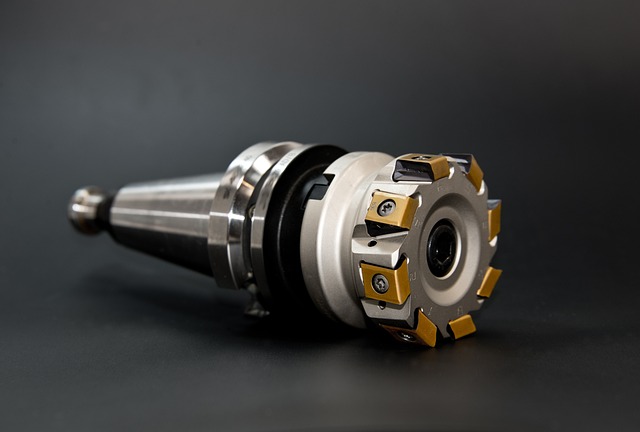Laser Cleaning Technology: Applications for Small Shops and Home Use
Laser cleaning technology has evolved from a niche industrial application to a more accessible tool for smaller operations and even dedicated hobbyists. This innovative cleaning method uses focused light energy to remove contaminants from surfaces without the abrasives, chemicals, or mechanical processes traditionally employed in restoration and cleaning work. As prices for entry-level laser cleaning devices continue to drop and portable options emerge, many small business owners and serious DIY enthusiasts are questioning whether this technology might be appropriate for their needs.

What Is Laser Cleaning — and Can It Make Sense for Small Shops or Home Use?
Laser cleaning works on a remarkably simple principle: a laser beam is directed at a surface, creating rapid pulses of light energy that cause contaminants to absorb the energy, heat up, and essentially vaporize or flake away from the underlying material. Unlike sandblasting, chemical treatments, or wire brushes, laser cleaning often leaves the base material completely untouched while precisely removing rust, paint, oxide layers, and other unwanted coatings.
For small shops involved in restoration work, metal fabrication, or specialized repairs, compact laser cleaning systems offer considerable advantages. They require no consumable materials, generate minimal waste, and can reach intricate areas that traditional methods struggle with. For home users, the applications are more limited but still valuable for specific projects like automotive restoration, antique renovation, and specialized cleaning of metal collectibles or heirloom pieces.
The real question becomes one of scale and frequency of use. Small shops that regularly deal with rust removal, surface preparation before painting or coating, or heritage restoration may find that even entry-level laser cleaners quickly pay for themselves in efficiency and precision. Home users should carefully evaluate whether their projects justify the investment, perhaps considering rental options for occasional needs.
How Lower‑Cost Handheld Laser Cleaners Work: Power, Precision, and Limitations
Lower-cost handheld laser cleaning systems typically operate at power ranges between 20W and 100W, considerably below their industrial counterparts that can reach several kilowatts. These portable units utilize fiber laser technology, which offers reliability and relatively lower maintenance compared to older laser types. The operator guides the laser head across the surface being cleaned, with the beam rapidly pulsing to ablate contaminants without damaging the underlying material.
These entry-level systems excel at removing surface rust, light paint layers, and oxide films from metals. However, their lower power output creates important limitations. Deep rust, multiple paint layers, or heavily bonded contaminants may require multiple passes, significantly slowing down the process. Additionally, the cleaning width of these systems is typically much narrower than industrial models, making large-area cleaning more time-consuming.
The precision of these units remains impressive even at lower price points. Most entry-level laser cleaners allow for adjustment of parameters such as pulse frequency and power intensity, enabling users to tailor the cleaning process to different materials and contaminant types. This adjustability helps overcome some of the power limitations when working with more challenging cleaning tasks.
Pros and Cons: Why Laser Cleaning Outshines Abrasives and Chemicals
Laser cleaning offers several compelling advantages over traditional cleaning methods. First, it’s environmentally friendly, producing no chemical waste and requiring no disposal of spent abrasive media. This significantly reduces the secondary costs associated with cleanup and regulatory compliance. Second, the precision of laser cleaning allows for selective contaminant removal without affecting the base material’s dimensions or properties—crucial for historical artifacts, precision parts, or thin materials.
The non-contact nature of laser cleaning eliminates mechanical stress on components, making it suitable for delicate or valuable items where sandblasting or wire brushing might cause damage. Additionally, the process generates minimal heat in the underlying material, preventing warping or other thermal damage that chemical processes might cause.
On the downside, the initial investment for laser cleaning equipment remains substantially higher than traditional methods. Even entry-level systems represent a significant capital expense compared to sandblasting equipment or chemical cleaning supplies. The cleaning speed of lower-power units can also be frustratingly slow for large surface areas, making them impractical for extensive projects without a considerable time investment.
Safety First: What You Should Know About Laser Hazards at a Non‑Professional Level
Laser cleaning equipment, even at lower power levels, presents significant safety hazards that require serious attention. The concentrated light energy can cause severe eye damage or blindness without proper protective equipment. Most systems operate in the infrared spectrum, making the beam invisible to the naked eye—yet fully capable of causing injury.
Users must wear appropriate laser safety glasses specifically rated for the wavelength of their equipment. Regular sunglasses or welding masks are completely inadequate for this purpose. Proper ventilation is also essential, as the vaporization process can release potentially harmful particles and gases depending on the material being cleaned.
Fire risks represent another safety concern, particularly when working with flammable materials nearby. The focused energy from even lower-power laser cleaners can easily ignite paper, wood, certain fabrics, and many chemicals. Maintaining a clean, organized work area and having appropriate fire suppression equipment readily available is non-negotiable when operating laser cleaning equipment.
Is the Price Justified? Operating Costs vs Upfront Outlay for Light‑Duty Cleaning
The significant initial investment in laser cleaning equipment must be weighed against the ongoing operational efficiency and reduced consumable costs. While traditional cleaning methods require continuous purchase of abrasives, chemicals, or mechanical components that wear out, laser cleaners primarily consume electricity and occasional maintenance.
| Laser Cleaning System Type | Approximate Price Range | Operating Cost Estimates | Best Applications |
|---|---|---|---|
| Entry-Level Handheld (20-50W) | $3,000-$8,000 | $0.50-$1.00/hour (electricity) | Hobby use, small parts, spot cleaning |
| Mid-Range Portable (50-100W) | $8,000-$15,000 | $1.00-$2.00/hour (electricity) | Small shops, precision work, moderate restoration |
| Professional Grade (100W+) | $15,000-$30,000+ | $2.00-$5.00/hour (electricity + maintenance) | Professional restoration, production environments |
| Traditional Sandblasting | $500-$3,000 | $15-$30/hour (media, electricity, maintenance) | Large surface areas, heavy material removal |
| Chemical Cleaning | $100-$500 (equipment) | $10-$25/hour (chemicals, disposal, PPE) | Batch processing, complex geometries |
Prices, rates, or cost estimates mentioned in this article are based on the latest available information but may change over time. Independent research is advised before making financial decisions.
For most small shops considering this technology, the breakeven point typically occurs after 1-3 years of regular use, depending on the volume of cleaning work previously outsourced or handled with consumable-heavy methods. Home users will find it much harder to justify the expense purely on cost savings, making laser cleaning more of a premium option for those who value the precision, cleanliness, and unique capabilities rather than pure economic efficiency.
The long-term value proposition improves for applications requiring high precision or when working with valuable materials where mistakes from traditional cleaning methods could be costly. Additionally, as the technology continues to mature and more manufacturers enter the market, prices are gradually becoming more accessible for smaller operations and dedicated enthusiasts.




